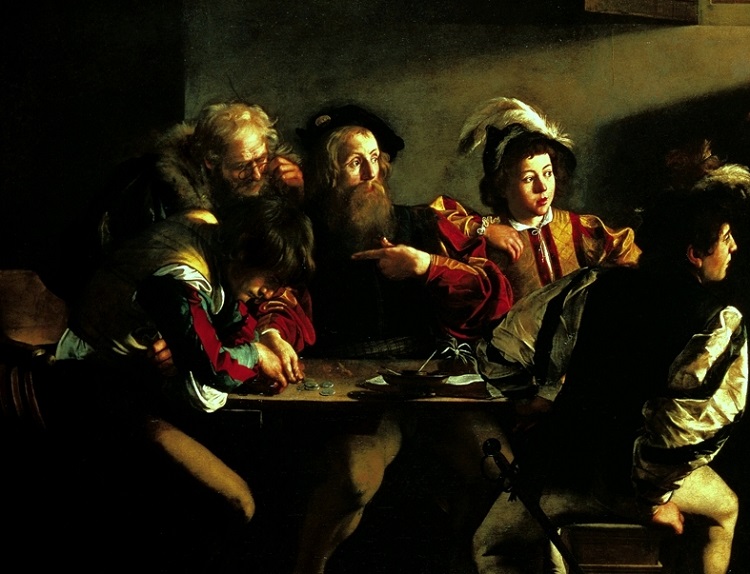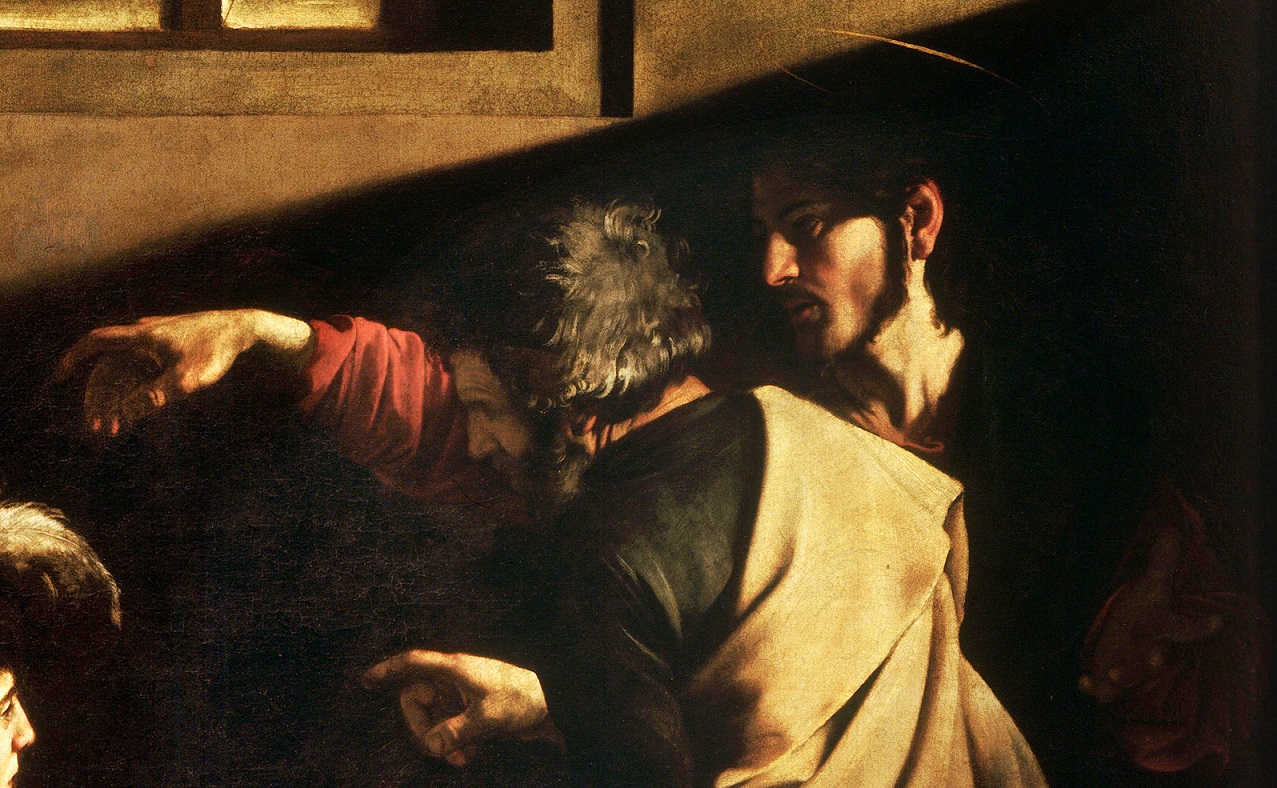
Michelangelo Merisi detto il Caravaggio (1571 – 1610) “The calling of Saint Matthew/Vocazione di San Matteo” (1599 – 1600), Oil on canvas, cm 322 x 340, Chiesa di San Luigi dei Francesi, Roma.
When I travel to Rome, I cannot help but find at least 5 minutes to go to the Church of San Luigi dei Francesi, because some of the most spectacular works of the seventeenth century and which are considered Caravaggio’s masterpieces are located there.
Among Caravaggio’s most investigated works is definitely the “Calling of St. Matthew” at the Contarelli Chapel in the Church of San Luigi dei Francesi in Rome. It is his first commission for a public place and he made the aforementioned canvas confronted by the Martyrdom of St. Matthew at the turn of the 16th century.
Vocation of St. Matthew by Caravaggio

The Calling of St. Matthew is one of my favorite works by Caravaggio, where the use of light, which rips through the darkness of the canvas, becomes an element of perspective and prompts the viewer to follow that light, which comes from outside and is divine in nature.
ANALYSIS OF CARAVAGGIO’S VOCATION OF SAINT MATTHIAS
If we look at Christ’s index finger we notice that it still does not point to anyone specifically, but it becomes the guide for our gaze to go to the bottom of the canvas. The three men, all three are involved in the counting of the coins: the boy counts them, the elderly man watches over the young man, and the mature man reenters the core because of the closeness of the two.
The latter seems to be the only one who notices Christ’s presence, and his raised index finger goes to accentuate the Redeemer’s gesture, but that very finger, though it seems to point to someone, is conducted with such a play of chiaroscuro that it remains so vague that it does not distinctly point to anyone.
Perhaps the extraordinary nature of the work is grasped precisely here: Caravaggio does not want to identify the apostle in a single subject, but in three protagonists performing the same job (the tax collector), representing them, however, as the three ages of man and thus overloading him with added value.
From the Gospel we know that Christ meets Matthew in Capernaum, he, the man hated by the Jewish people because he is a tax collector on behalf of the Roman empire, accused by the priests as a sinner because he worships the coin with the effigy of the emperor; but to this Caravaggio adds more: he places him in a dark dive bar and interpreted as ‘the three ages of man’ he sets no limit to time and space.
CURIOSITIES ABOUT THE VOCATION OF SAINT MATTHIAS
In admiring Caravaggio’s “The Calling of St. Matthew,” one comes across a number of curiosities that make this work not only a masterpiece of Baroque art, but also an intriguing historical and cultural enigma. First and foremost is Caravaggio’s revolutionary choice to depict sacred figures with the likenesses and attitudes of ordinary people, drawn directly from everyday life in the Rome of his time.
This approach, radically innovative for the time, gives the work an unprecedented humanity and emotional closeness.
Another peculiarity is the masterful use of light, which not only shapes the figures and space, but also becomes a theological symbol: the ray of light pointing to St. Matthew symbolizes the divine call, an element that Caravaggio uses to emphasize the moment of spiritual conversion.
Moreover, the position of the characters and their expressions have been the subject of wide interpretations: some scholars suggest that Caravaggio included a hidden self-portrait among the witnesses of the scene, a detail that continues to stimulate debate and research.
Finally, the “Calling of St. Matthew” is part of a group of three works all housed in the Contarelli Chapel of San Luigi dei Francesi in Rome, a context that further enriches its significance and importance in the artistic and spiritual landscape. These curiosities only add to the fascination of a work that, centuries later, continues to speak to the hearts and minds of observers, testifying to Caravaggio’s timeless genius.
The beauty of this painting goes beyond technique and style; it is a tale of faith in which Caravaggio affirms that when Christ calls, whatever we do or think does not matter, our response is immediate.


Sembra che il raggio che entra a destra, sia messo per ultimo, dopo aver dipinto tutto. La faccia del Cristo, le due mani e il vestito di Pietro sono ulluminati da altra fonte. La gamba del primo soldato e la gamba del signore che maneggia le monete è illuminata dalla stessa fonte, anche se è sotto il tavolo. Se togliamo il raggio che bagna il muro, il quadro sta in piedi lo stesso, anche senza il raggio. Si veda bene la faccia del Cristo che non è illuminata dal raggio perchè è volta al contrario. Chi sia Matteo è difficile distinguerlo, sempre che non sia l’uomo con gli occhiali che da usuraio controlla quello con le monete.